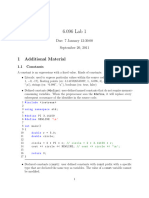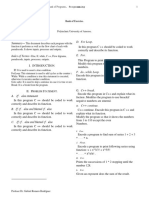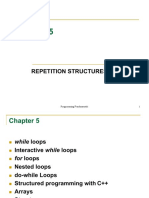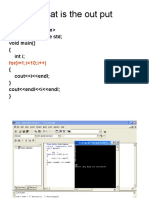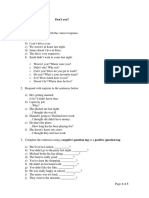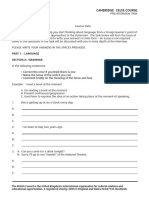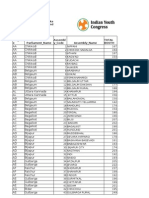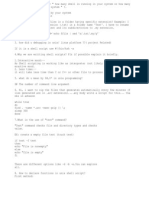0% found this document useful (0 votes)
8 views20 pagesLecture 5
This document outlines the content of Lecture 5 for the CS 101 Introduction to Programming course in Spring 2024, focusing on control structures such as for loops, while statements, and constants. It includes code examples, explanations of syntax and semantics, and the use of increment/decrement operators. The lecture also discusses the behavior of break and continue statements in different loop structures.
Uploaded by
gurvardaan01Copyright
© © All Rights Reserved
We take content rights seriously. If you suspect this is your content, claim it here.
Available Formats
Download as PDF, TXT or read online on Scribd
0% found this document useful (0 votes)
8 views20 pagesLecture 5
This document outlines the content of Lecture 5 for the CS 101 Introduction to Programming course in Spring 2024, focusing on control structures such as for loops, while statements, and constants. It includes code examples, explanations of syntax and semantics, and the use of increment/decrement operators. The lecture also discusses the behavior of break and continue statements in different loop structures.
Uploaded by
gurvardaan01Copyright
© © All Rights Reserved
We take content rights seriously. If you suspect this is your content, claim it here.
Available Formats
Download as PDF, TXT or read online on Scribd
/ 20









